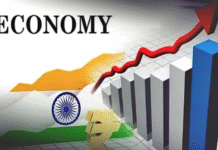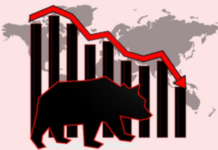Mumbai– India’s benchmark equity indices ended lower for the second consecutive session on Thursday as fears of economic slowdown as well as negative global cues subdued investors’ sentiments.
Both the key indices started on a positive note with a gap-up opening, but ceded their initial gains soon afterwards.
Among sectors, realty was the only major gainer while metals, banks, and oil and gas were the main losers.
Globally, Asian stock markets were mixed, following the negative cues overnight from Wall Street as the accelerating pace of inflation and the bitcoin’s sharp plunge weighed on the market.
On the other hand, stocks in Europe staged a small rebound after cryptocurrency markets began to recover from a major sell-off though tapering talk from the US Fed kept bond markets under pressure.
In terms of the domestic market, Nifty opened mildly higher but sold off in the first few minutes of trade.
The S&P BSE Sensex ended at 49,564.86, lower by 337.78 points, or 0.68 per cent, from its previous close.
Similarly, the Nifty50 of the National Stock Exchange closed the day’s trade at 14,906.05, down 124.10 points, or 0.83 per cent, from its previous close.
“Nifty fell amidst lower than average volumes with advance decline ratio becoming equal. In the process, the upgap formed on May 18 has been filled, nullifying the sharp bullishness,” said Deepak Jasani, Head of Retail Research at HDFC Securities.
“However, nervousness out of recent data on inflation and cryptocurrency sell-off seems to have tapered off or already in the price. 14,824-15,009 is the near term band for the Nifty.”
Vinod Nair, Head of Research at Geojit Financial Services, said: “Domestic market witnessed selling due to lack of further domestic cues and weak global market. Wall Street has extended its losses as US treasury yield and dollar index jumped post the release of a watchful Fed minute, which was below the expectations.”
“Fed minutes signalled a plausible slowdown in bond buying ‘at some point’, a shift in policy in the future, which will have an implication on EMs.” (IANS)








